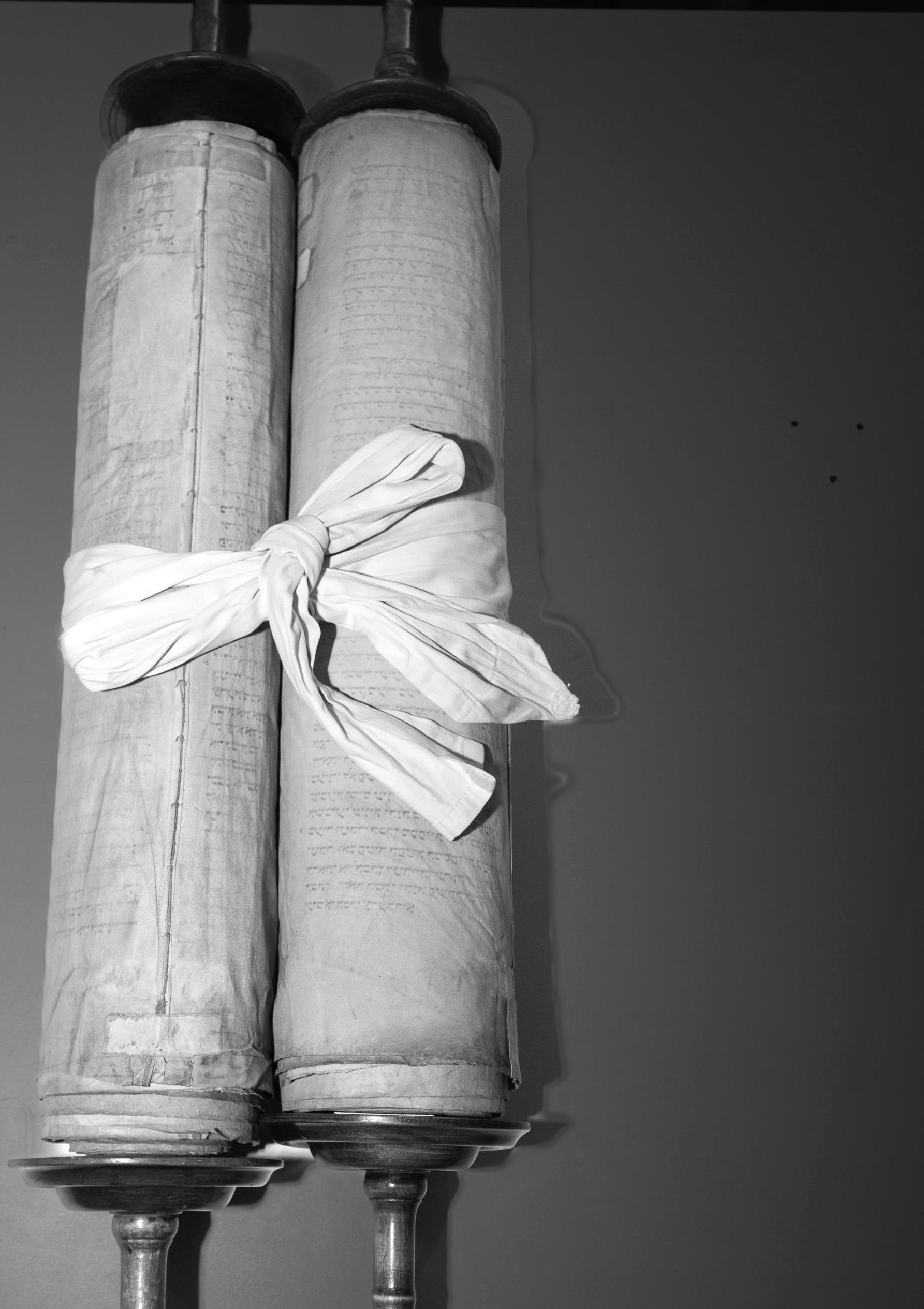
2 minute read
Witnesses to the Holocaust
Two Winnipeg Holocaust survivors have never told their stories and yet they are important witnesses to the Shoah. These survivors are two Czech Torah scrolls whose presence speaks as loud as words. The Nazis swallowed pre-war Czechoslovakia in two bites, November 1938 and March 1939, creating an occupied Czech zone called the Protectorate of Bohemia and Moravia and the independent state of Slovakia, a German ally. The Nazis destroyed many synagogues in the Czech zone and left others to decay while sending Jews to concentration camps and death camps. Despite the genocide, the Central Jewish Museum in Prague continued to function under Nazi supervision and its employees collected almost 10,000 Torah scrolls and other liturgical “art objects.” Then, the employees shared the tragic fate of their fellow-Jews.
After the war, the Central Jewish Museum was reconstituted but lacked the resources to care for the scrolls properly. In 1963, the Communist government of Czechoslovakia sold 1564 scrolls to an English philanthropist, Ralph Yablon, who donated them to the Westminster Synagogue in London, a Reform congregation. The Synagogue created a Memorial Scrolls Trust that hired trained experts to examine, catalogue, and evaluate them, and make preliminary repairs. The scrolls all lacked the individualized attention that parchment requires, even those dating back to the 17th and 18th centuries. The Memorial Scrolls Trust offered them on permanent loan to Jewish communities around the world.
Winnipeg’s newly-formed, small Reform Congregation, Temple Shalom, led by Rabbi
Jerry Steinberg, quickly put in a request. The scroll arrived on Yom Kippur 1969 in time for Yizkor. At the service, held at the Council House on Pritchard Avenue, congregants carefully passed the scroll from hand to hand to allow everyone to greet it individually. After some additional scribal repairs, Temple Shalom held a dedication service with Rabbi Zalman Schachter, Professor of Judaic Studies at the University of Manitoba, as the featured speaker. Temple Shalom read the Czech scroll at services until it acquired a second Torah a decade later. The scroll is now displayed on Kol Nidre and used sparingly for readings at other times of the year due to what Rabbi Allan Finkel terms its “poignant fragility.” The scroll was scribed in 1923 for a synagogue in Ostrava, the third largest Jewish community in Czechoslovakia on the eve of World War II. Seven other Ostrava survivors are out on permanent loan from the Memorial Scrolls Trust.
Congregation Shaarey Zedek received its Czech Torah scroll in 1981. Mrs. Anna Lazareck learned of the scrolls while visiting San Diego and followed up with visits to London and Prague. Congregation Shaarey Zedek then arranged the permanent loan of a scroll from Slany, a small city of about 13,000 before World War II with fewer than 300 Jews who held six Torah scrolls in their synagogue. The one that came to Shaarey Zedek was scribed in 1880 and contains many distinctive letters that are no longer scribed. The scroll survived in such a fragile condition that it is only held during Yizkor and the annual Yom HaShoah commemoration.












